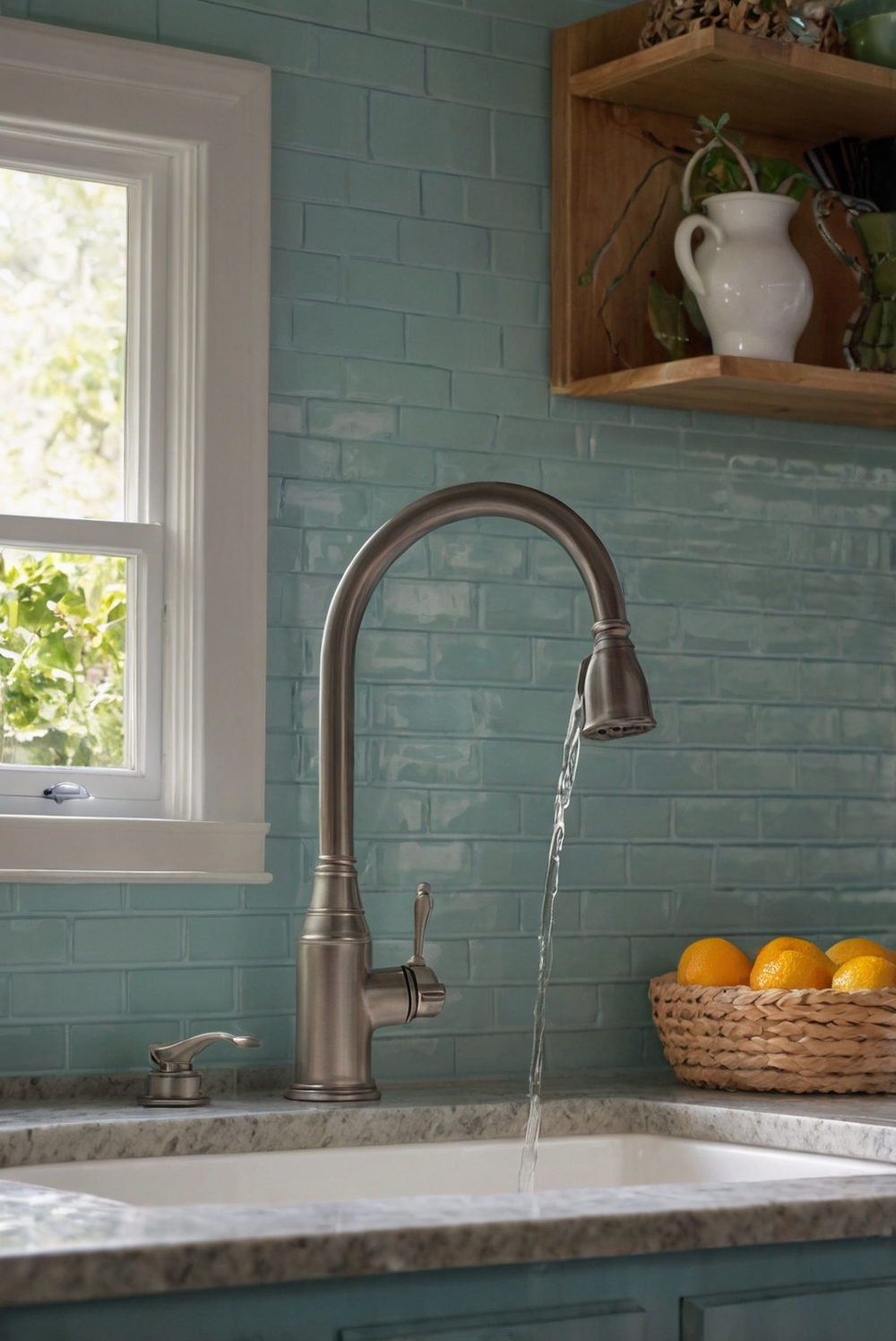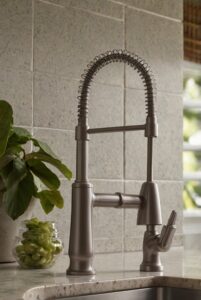Explore the latest trends and tips on selecting a water-efficient kitchen faucet to enhance your interior design while promoting sustainability in your daily routine.
Increasing water efficiency with your kitchen faucet choice is crucial for sustainable living and cost savings. By selecting a low-flow or aerated faucet, you can reduce water consumption without compromising functionality. Additionally, consider a touchless or motion sensor faucet to minimize water waste during meal prep. Regularly checking for leaks and replacing worn washers can also help conserve water. Implementing these practices as part of your home decor routine not only promotes water conservation but also enhances the overall look and functionality of your kitchen. Be mindful of the water-saving features when choosing your kitchen faucet to contribute to a more sustainable and efficient home interior.
How to increase water efficiency with your kitchen faucet choice?
Choose a faucet with a high-efficiency aerator:
Aerator is a small attachment at the end of the faucet that mixes air with water, reducing water flow while maintaining pressure. Look for faucets with aerators that have a flow rate of 1.5 gallons per minute (GPM) or less. This can significantly reduce water wastage without compromising on performance.
Opt for a touchless or motion-sensor faucet:
Touchless or motion-sensor faucets can help save water by turning off automatically when not in use. This feature prevents water from running unnecessarily, reducing overall water consumption in the kitchen.
Consider a faucet with adjustable flow settings:
Some faucets come with adjustable flow settings that allow you to control the water flow based on your needs. This feature is beneficial when you need a gentle stream for rinsing delicate items or a stronger flow for cleaning tasks, helping you optimize water usage.
Install a filter or purifier:
Adding a filter or purifier to your kitchen faucet can improve water quality and taste, encouraging you to drink more tap water instead of bottled water. This switch not only saves water but also reduces plastic waste from disposable bottles.
Regularly check for leaks and fix them promptly:
Even a small leak in your faucet can waste a significant amount of water over time. Inspect your faucet regularly for leaks and repair them promptly to prevent water wastage. This simple maintenance task can contribute to water efficiency in your kitchen.
In conclusion, increasing water efficiency with your kitchen faucet choice involves selecting a high-efficiency aerator, opting for touchless or motion-sensor features, considering adjustable flow settings, installing a filter or purifier, and maintaining a leak-free faucet. By implementing these strategies, you can conserve water, reduce utility bills, and promote sustainable practices in your home.
1. How can choosing a water-efficient kitchen faucet help save water?
Choosing a water-efficient kitchen faucet can help save water by reducing the flow rate while still maintaining adequate pressure. This can result in significant water savings over time, especially in households where the faucet is frequently used. Look for faucets with a WaterSense label, which indicates that they meet EPA standards for water efficiency.
2. What are some features to look for in a water-efficient kitchen faucet?
When selecting a water-efficient kitchen faucet, look for features such as aerators, which mix air with water to reduce the flow rate without compromising performance. Additionally, consider choosing a faucet with a single-handle design, as it allows for better control over water temperature and flow.
3. How can I measure the water efficiency of my kitchen faucet?
You can measure the water efficiency of your kitchen faucet by checking its flow rate, which is typically measured in gallons per minute (GPM). Lower flow rates indicate higher water efficiency. Consider installing a flow meter to accurately measure the flow rate of your faucet.
4. Are there any additional tips for increasing water efficiency in the kitchen?
In addition to choosing a water-efficient faucet, you can increase water efficiency in the kitchen by fixing leaks promptly, using a dishwasher with a high energy star rating, and washing fruits and vegetables in a basin rather than under running water. These small changes can add up to significant water savings over time.
5. How can I maintain the water efficiency of my kitchen faucet?
To maintain the water efficiency of your kitchen faucet, regularly clean the aerator to remove mineral deposits that can impede water flow. Additionally, check for leaks and repair them promptly to prevent water waste. Consider scheduling regular maintenance checks to ensure that your faucet continues to operate efficiently.




